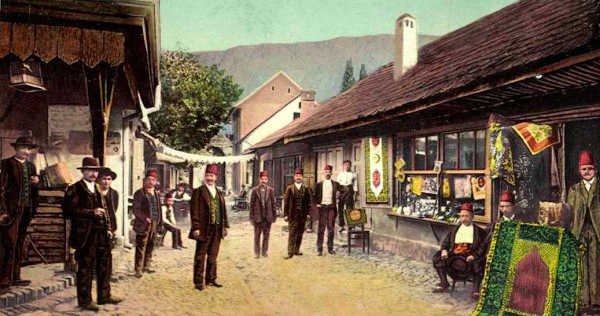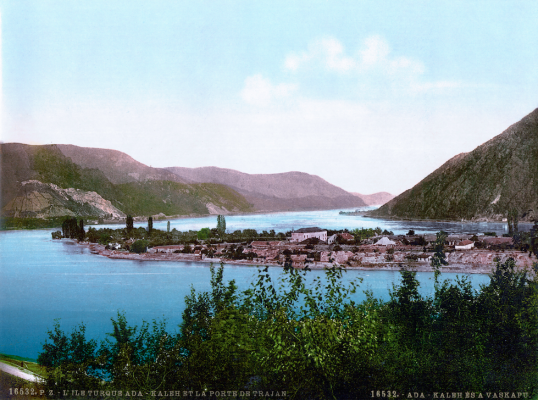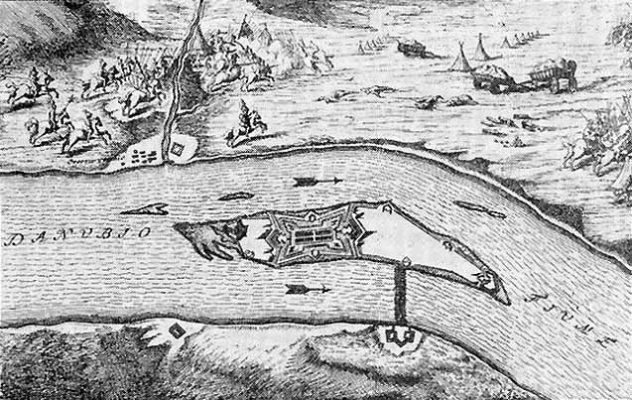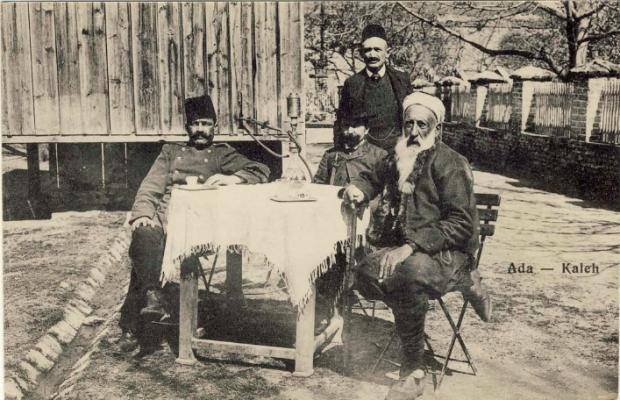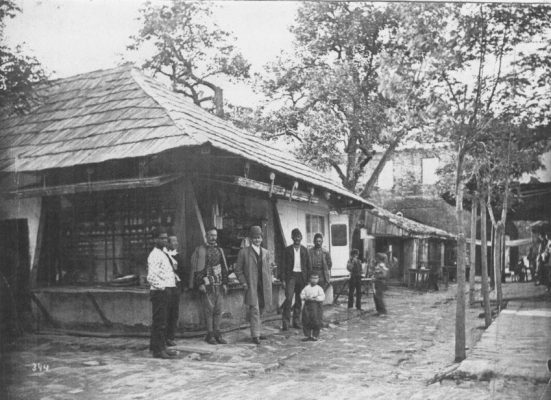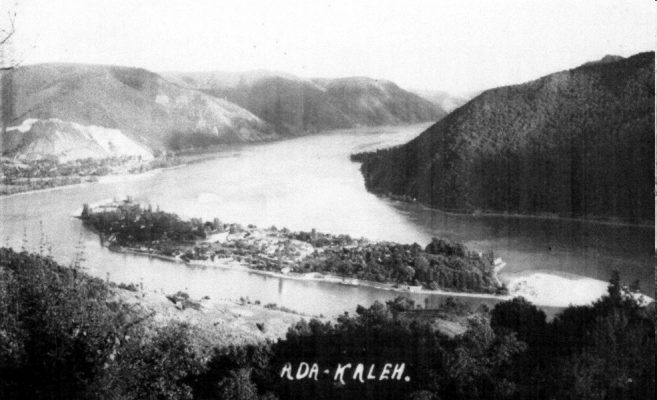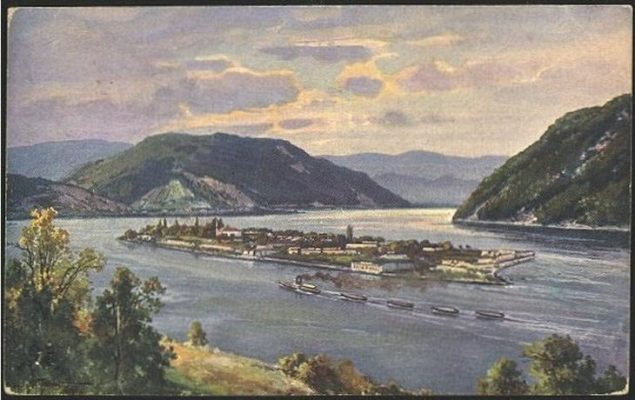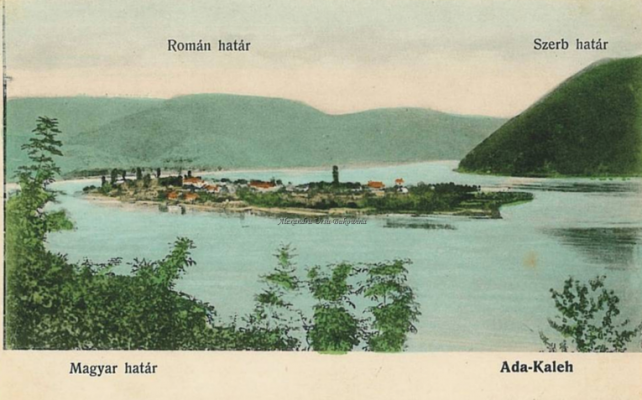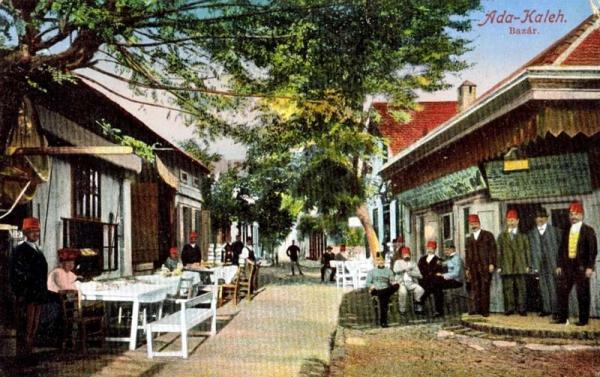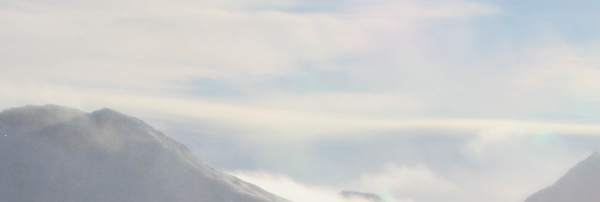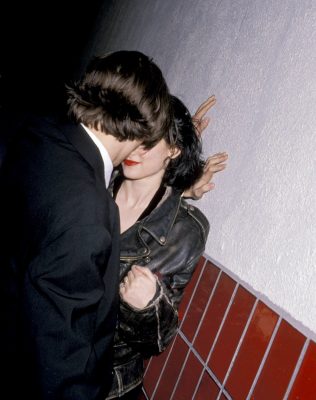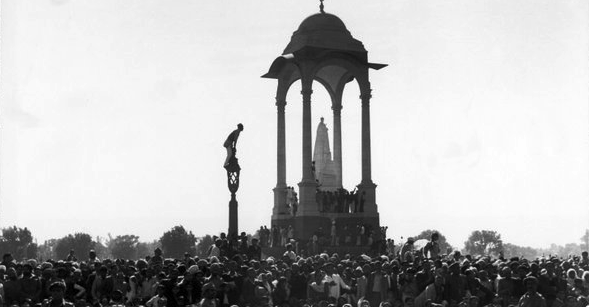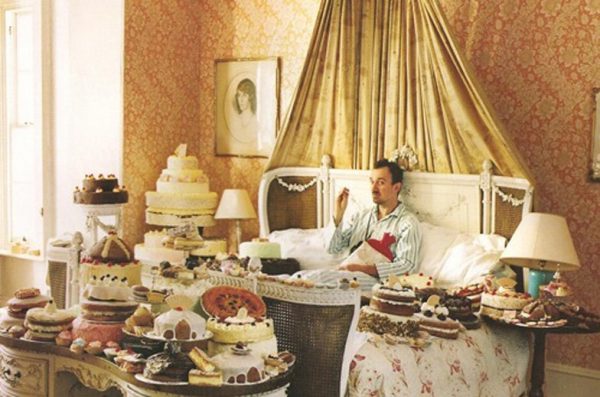When King Carol II of Romania set foot on the tiny Danubian island of Ada Kaleh on 4 May 1931, it was said among the islanders that his arrival had been foretold in a dream. The decisions he made after spending two hours there that summer evening were so momentous that his visit would later be marked with an annual festival.
About a year into his reign, the king was touring the area and had decided to drop in on this most unusual corner of his realm. The island lay in the region known as the Iron Gates, where the river passes through a series of gorges as it descends through the Carpathian Mountains. It was a perilous place for river traffic, and boats travelling upstream had to be towed from the bank in order to overcome the current. Just above the first set of rapids, on a bend in the river opposite the town of Orşova, stood Ada Kaleh. The island was little more than a narrow strip of sandy soil about a mile long and 400 metres wide at its broadest. The people on the river’s northern bank were Romanian and to the south Serbian, but the islanders themselves – who numbered about 680 at the time of the king’s visit – were Turks. Framed against the dark flanks of the mountains that rose on each side of the Danube, Ada Kaleh’s poplars and chestnuts, the cypresses of its cemetery and the minaret of its mosque, seemed to float like a mirage on the water’s surface.
The king – white military uniform dazzling in the sunshine – stepped from his boat at around five o’clock trailed by an entourage of more soberly clad bureaucrats, soldiers, and politicians. At that time, the island’s flowers were in bloom, tumbling over the ramparts of the old fortress from which it took its name (ada kale meaning ‘island castle’ in Turkish) and bursting from the whitewashed petrol tins that stood in its cobbled streets. The crumbling battlements glowed in the warm, sharp light of the late afternoon sun that broke through the scattered clouds, and from the flooded outworks swelled the voices of thousands of frogs.
Some months earlier, as the islanders later recounted to Gheorghe Lungulescu of Universul newspaper, the saint Miskin Baba, whose tomb stood in the little park at the island’s eastern end, had appeared to the simpleton Ibrahim Ali in his sleep, and spoke these words: ‘Go to your leaders and tell them to fix my shrine and cover my grave in a wooden structure like the vaulted dome of a mosque. Four months after the work is completed, the leader of the country will come to the island… Show him your houses and your lives and ask him to give back your privileges, without which you cannot live, and he shall give them back to you.’
These ‘privileges’ were tax and customs exemptions that the islanders had enjoyed when Ada Kaleh was an exclave of the Ottoman Empire and a popular destination for European tourists cruising the Danube. The First World War had brought about the collapse of both tourism and the Ottoman state, and when the new Republic of Turkey ceded the island to Romania in 1923 the old privileges were not restored, and its inhabitants sunk into poverty.
Ibrahim Ali had the same dream three times, and it was only after he threatened to drown himself in the river that the elders heeded him and the repairs were carried out.
When the king arrived, mayor Ibrahim Turhan and Ali Kadri – the owner of the cigarette factory that was the island’s main business enterprise – received him and conducted him on a tour of their home. The group proceeded through the ornate stone archway of the fortress’s main entrance and into the village, its narrow streets trellised with grapevines. They showed him the mosque with its huge carpet that had been a gift from Sultan Abdulhamid II and which weighed close to half a ton. Afterwards they visited the home of Niyazi Suleiman, whose life was presented as an example of the diligence and fortitude with which the islanders bore their poverty. At Niyazi’s house the island notables prevailed on the king to come to the Moka Café and listen further to their hardships. Carol drank coffee prepared in the traditional way with the pot brewed on a bed of hot sand, served to him in a cup from which his father King Ferdinand had once drunk. After hearing their pleas, he announced to them: ‘You may return to your homes in peace. From now on, you will have back your privileges, and all my care.’
They were not idle words. The following month a limited company, Musulmana, was set up with a license to import luxury goods including tobacco, coffee, sugar, alcohol and cigarettes, all tax-free. In an arrangement codified into Romanian law, half the company’s profits were assigned for the upkeep and modernisation of the island, with the other half divided out equally as a small subsidy to every one of its residents, equivalent to about £150 a year in today’s money. Within three years, the income was used to build a small electricity plant, and at around the same time a train station was built on the northern riverbank opposite the island, with tickets from Bucharest available at half price. Within four years, 40,000 to 50,000 tourists were visiting Ada Kaleh annually. Each 4 May, the islanders held a festival at which they distributed the company’s income.
And so, if we finished the story there, it would have been much as the saint had predicted when he told Ibrahim Ali that, in the end, ‘a chalice of gold will rise above your pains and all the citizens will receive happiness.’ But such endings only exist in fairy tales.
